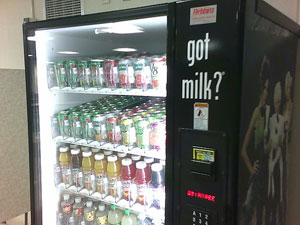How to Write an Introduction: Drafting

Source: Creative Writing, Phillip Martin
The first step is to create enough of an introduction to get you started. The next section will tell you how to refine it. The thesis is already written, so you know what the last sentence or two of your introduction is going to be. Some students think that writing an essay should follow the same steps as reading an essay: since you read the first sentence first, you should write the first sentence first. Though this may be the obvious choice, it is rarely a good idea to write an introduction before you have a thesis. Many writing instructors think that you should even hold off on writing an introduction until after you’ve written all the body paragraphs.
A good introduction succeeds if it
- establishes credibility. It should demonstrate that you know the range of attitudes about your topic and the important evidence. If you’re writing a long paper, you might write an entire section that reviews the field. In it, you could summarize what other people have written about the topic of your paper. In the case of a short essay, you can establish credibility in the field with a few sentences that summarize the views of the other side—the side you are not going to take.
- makes a connection. By beginning with comments about the side you will not end up supporting, you acknowledge the ideas of readers who are going to disagree with you. It is much more likely that these readers will be willing to think about your views if you show that you have thought about theirs.
- stirs curiosity. After reading the introduction, the reader should be thinking “Tell me more.” It is always to your advantage as a writer to begin in a way that captures the reader’s attention.
One good way to gain some credibility, build a connection, and tweak curiosity is to present the opposing side of your argument. Start off in the enemy camp.
In order to do this, you have to think of why people would disagree with your thesis, and then start your introduction with a phrase like “Many people think that . . .”
Using the “junk food/healthier option” thesis, type a response for each step below using your notes. When you’re finished, check your understanding.
1. Write your thesis (we’ll use the junk food/healthier options thesis).
Sample Response:
Machines that sell junk food in schools should have healthier options.
Close2. Write something that a person who disagrees might say.
Sample Response:
The people who disagree might say, “There is no need to make such a big deal of this. Students can (and will) make their own choices about what to eat. We should trust students to make these decisions without trying to control them.”
Close3. Write a beginning sentence starting with “Many people think . . .” Insert a statement that disagrees with the thesis.
Sample Response:
Many people think that students will make their own choices about what to eat while they’re at school and should be allowed to make these decisions without being forced to consider healthier choices.
Close4. Write a “however” statement that shows why you don’t accept the disagreement statement.
Sample Response:
However, students deserve not only the right to choose the food that they want, but also the right to have options to choose from.
Close5. Write a thesis.
Sample Response:
Machines that sell junk food in schools should have healthier options.
CloseThe first-draft form of this brief introduction would look like this:

Source: short answer: no, Aaron TD, Flickr
Many people think that students will make their own choices about what to eat while they are at school and should be allowed to decide without being forced to consider healthier choices. However, students deserve not only the right to choose the food that they want, but also more options to choose from. Machines that sell junk food in schools should also have healthier options.
This is not going to be the final form of the introduction; it is only a starting draft of the introduction. Before we refine, let’s go over the steps.
Read each statement below and then drag and drop it next to the correct step.